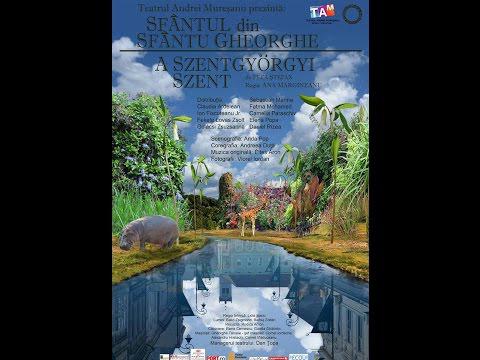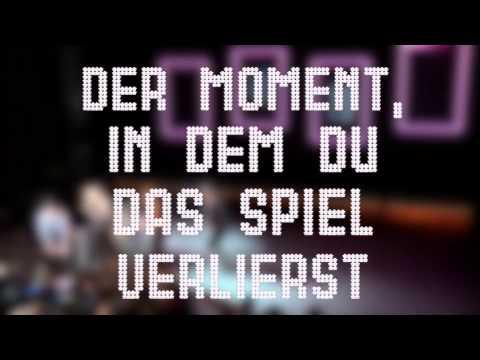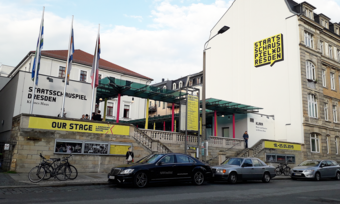Inviting Them In
Writing as an Act of Communion
The classic model of the author writing a stage play is wearing off quickly in continental Europe these days. After the rise of post-dramatic theatre, the job description of a playwright is open to reinterpretation, while the concept of authorship itself keeps being redefined as a complex, collective process.
In a country such as my native Romania, where the auteur-director and the actor are the main figures of the theatrical universe, this classic model hasn’t really had the chance to organically take off and peak. Despite the emergence of a new writing philosophy, professional playwrights have never been on center stage in the decades following the fall of communism in 1989.
Before 1989
While the nineteenth-century playwright Ion Luca Caragiale is an iconic figure in Romanian culture, and Eugene Ionesco’s work draws from the absurdity of Romanian reality, there was never a coherent tradition in encouraging writers for the stage. During communism, Romania didn’t have a Vaclav Havel. Resistance manifested itself through works by auteur-directors, in most cases reinterpretation of well-known classics (for instance Gogol’s The Government Inspector directed by Lucian Pintilie at the Bulandra Theatre in Bucharest, was banned by the censorship board in 1972. Pintilie couldn’t work in Romania for years, and the manager of the theatre, director Liviu Ciulei had to resign). While rarely produced, new plays tended to be not that interesting or relevant, since it was usually safer to avoid tackling the painful truths of Romanian life under communism or to just coat social criticism in poetry, metaphor, or situational comedy in order to avoid censorship. Playwrights were not really invited in the process of play development, remaining passive voices. A text usually ended up in a drawer and, if staged, authors had little to no interest in rewrites or development.
Late 90s to Early 2000s
This classic model of the Romanian playwright as a marginalized, passive figure continued to exist for most of the 90s, after the fall of communism. It was only in the late 90s to early 2000s that new voices started to write plays with an eye toward collaboration with a director and the production itself. Metaphoric, subversive theatre didn’t really work anymore, as official censorship was no longer an issue. Rapid transformations in transitional Romania, and its ever-present social injustice, demanded an artistic response not eluding reality but embracing it. Young directors suddenly started to look for writers to work with, writers that would tell stories about the world around them. A change of paradigm was initiated and implemented by the dramAcum group in the early 2000s. The young directors in this collective made it their official mission to discover and work with new, young writers.
This movement caused an explosion of plays and authors. The playwright got invited to be an active participant in the staging process. Productions followed. A wave of optimism emerged. It seemed it was finally possible for a young writer to get their work exposed to an audience, even if this exposure happened in unconventional venues (immediately tagged as “indie” or “underground”) on the smallest stages of the state subsidized theatres. The subjects revolved around social injustice. Generation gaps, identity, recent memory, social inequality, and marginalization were the central themes in the new work.
Suddenly, everybody seemed capable of writing a play. Directors, actors, theatre critics, theoreticians, and choreographers became stage authors. This could be explained by the emergence of this new direction within the National Theatre and Film University in Bucharest, which later spread to other cultural centers in the country. Students and artists at the beginning of their careers were the first to catch the vibe.
Soon enough, with the discovery of research-based, documentary, verbatim, or devised practices, the model further changed. Creatively editing and rewriting documentary material became a valid form of playwriting just as any fictional structure, praised by critics and finding new audiences, sometimes in communities outside the traditional cultural or theatrical centers. However, this also meant that playwrights were acting more in their capacities as dramaturges rather than authors.
I believe the nature and role of a dramatic author involves an act of fictional creation. However, I begin with reality. And, maybe most of all, I love thinking about audiences and their participation in the theatrical event when writing.
New Model, Same Circumstances
Surprisingly though, the professional condition of the playwright hasn’t changed dramatically in this new model. In the grand scheme of Romanian theatre, new writing acquired more visibility, its existence being acknowledged by mainstream institutions. But the segment of new plays being produced is not large enough to actually sustain playwriting careers, both in terms of finance and artistic development. Only a few names make frequent appearances on the playwriting scene, and even fewer are able to support themselves financially from their playwriting.
The reluctance of mainstream subsidized venues to engage with new work has forced commercially oriented new writing to find a home in unconventional venues, mostly bars or cafes. The necessity here was for owners to sell beers and build a customer base, while actors needed to find venues to perform. It is no surprise that many of the new authors finding success in this model are actors turned playwrights and that the plays themselves serve the necessity of addressing a middle-class audience while showcasing the actor’s skills. The nature of the plays is usually entirely fictional, often conventional, despite the venue. The plays deal with relationships, they’re mostly comedies, not shying away from situational and boulevard formulas. The main objective is to offer a relaxing, entertaining after work experience for spectators. Given the commercially oriented goal of these works, although providing some form of financial revenue for the professional playwright, it doesn’t allow much room for innovation or development in form.
Collaborative Practice as a Means of Survival
As any other Romanian playwright working today, I’m no stranger to the developments of the playwriting models presented above. In order to keep working and still be able to take chances, I had to come up with practical answers and survival strategies. These strategies have slowly turned into an extremely subjective practice, allowing both innovation and some form of professional sustainability.
When describing this practice, I have to begin by saying I am a collaborative writer. I like to be involved in the production process. I go to rehearsals. I value research. I’m an author who cares about developing formal aspects of writing and constantly improving my craft. I love story, but I also love to deconstruct story. I believe the nature and role of a dramatic author involves an act of fictional creation. However, I begin with reality. And, maybe most of all, I love thinking about audiences and their participation in the theatrical event when writing.
In the past few years, the number one exploration in my storytelling has been creating a fictionalized text capable of setting up an honest group experience. Although I start by investigating reality in my work, I’m perfectly conscious that my output will always be inherently symbolic and fictional. So in that sense, I will always tell a lie, no matter how “real” my material is. Yes, it can be a very beautiful lie, a lie that provokes emotion and encourages critical thinking, but nonetheless, a lie with witnesses. There will be a meeting. People will see a box with live performers following a script. A story will be told. But in that convention everybody will have to, basically, lie. Including the theatregoers themselves, who have to suspend disbelief and accept a convention. So how to even begin writing for a truthful act of communion, when all you have are fictional tools? How do you actually, truly invite them in as a playwright?
The Theatrical Mapping of Romania
In 2008, Romanian director Ana Mărgineanu invited me to be the playwright of a project called “All the best about Romania.” The project aimed at researching and then fictionalizing stories in small towns. It wasn’t documentary theatre, but it proposed a very exciting meeting: that of locals coming to the theatre to engage with an outsider’s look into their community. While working regionally, Ana felt that local audiences deserved more than just the usual “staging a play.” To look at actual local realities, memories, legends, or beliefs implied an act of regaining conscience and identity available to the respective population. At the same time, the only creative rule in this project has been to constantly research mine and Ana’s subjective responses to the documentary material. Structurally, the challenge for me as a playwright was to create a play based on what we both felt was the “spirit of the town,” the one thing that we felt made it different from any other place in the country.
We wrote plays about the towns of Baia Mare (2008) and Piatra Neamt (2009) (reasonably innovative in terms of storytelling, but not in convention). We were researching the third town, Targoviste (2011), when we suddenly encountered residents extremely skeptical on what theatre has to offer. Many of those we interviewed couldn’t imagine how a play would possibly offer more than a film. This prompted us to imagine an experience where you could come to the theatre and have a few options available, simultaneously. The experiences ranged from the extremely intimate (one actor, one audience member), mobile (one audience member going with a character on a journey through all the seen and unseen spaces in the theatre), to the usual experience of seeing theatre on a classic stage (the only difference being that it was obvious that there was no suspense of disbelief involved). We held lotteries for the one-on-one scenes. The audience had to constantly make choices, and they had to return for future viewings in order to see everything available to them. This not only created honest participation, but it also green-lighted me to try a new style in each of the eighteen, nonlinear scenes of the play. The event became an act of communion, since people were free to debate, associate, and discuss choices. Audience members were interested in winning a lottery ticket, or gaining access to hidden spaces.
In the fourth installment of the project, in the town of Sfantu Gheorghe (2014), in return for buying a ticket, each audience member received three plastic balls that they could use throughout the performance to make choices, hear characters’ thoughts, and eventually change the outcome of the story itself. They had the freedom of throwing the balls at the actors, and they did. If they used all the balls available to them before the end of the piece, the spectators were encouraged to donate a small personal object so they could still cast a vote. The same freedom of debate and communication created a small social movement: suddenly people started to return for numerous viewings, in order to change the outcome of the play.

Theater as Social Event
Following the experience in “All the best about Romania,” I continued exploring different storytelling techniques when looking at a play as the core of a social event, both inside and outside a traditional performance venue. For instance, in Three Card Minsky, an exploration on debt and finance, the spectators were entirely in charge of the events unfolding in front of them, being able to trade and speculate with storylines and characters. In The Clock Is Ticking, everybody in the room has sixty minutes to age together. By the choices they make during the course of the event, each audience is able to leave an inherited scene to the next one. In Geografia Inutil…, a street performance developed with Brazil’s ERRO Grupo, a band loses its members and anyone on the street can jump in and replace them, completely blurring the lines between performer and spectator. In Broken City, another street performance, the busy and loud neighborhoods of Manhattan serve as inspiration and venue to the most intimate explorations, with the spectators as protagonists. In Medium State of Decay, there is no admission price. However, audiences get the chance of financing the play as it goes along, while they are being told the story, like in a novel, of how they once financed a play as it went along.

Writing for an act of communion has helped me redefine the usefulness of my writing, while expanding the classic model of the professional playwright and making it more exciting. To look at spectators as true participants and partners is writing for them, in the most literal sense. Yes, this might also mean acknowledging, from the get go, that everybody will take part in a simulation. That a “set” doesn’t need to be even built. That “characters” are played by actors and written down by the writer. That a “venue” is not ultimately a necessity. But the fact that everyone is honestly included makes the stakes higher. And a social event turns into an act of participation. A community is formed.
As a playwright, the range of tools to use is incredibly rich. There are different creative layers to address. Different types of complicities to write for (the relationship between performance and spectators being the first). An extremely complex task for performers. And not least important, the chance to not lie while using fiction.










Comments
The article is just the start of the conversation—we want to know what you think about this subject, too! HowlRound is a space for knowledge-sharing, and we welcome spirited, thoughtful, and on-topic dialogue. Find our full comments policy here